IF ROMEO AND JULIET GOT MARRIED
THE WOMAN BEHIND LOVE'S GREATEST MONUMENT
Colin Falconer
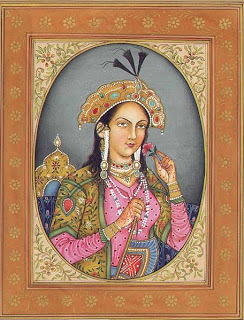
Mumtaz Mahal
In the west we think of Romeo and Juliet as the archetypal lovers, the
ultimate romantic couple. Yet India has perhaps better claim to the accolade
than Italy; if you want to find a monument to the world's greatest love story, you will
find it in one of India’s most polluted and industrialized cities, not the cobbled
medieval streets of Verona.
India’s Juliet was born Arjumand
Banu Begum, in Agra, northern India, the niece of the Empress Nur Jehan, wife
of the Emperor Jehangir. She was fourteen years old when she was engaged to
Prince Khurram - later to become the Shah Jahan. But she had to wait five years
for the marriage, for a date chosen by court astrologers as propitious for a
happy marriage.
For once, the court
astrologers got it exactly right.
In the intervening years the Shah had already taken two other wives; but after he married Arjumand he was so taken with her that he surrendered
his polygamous rights to other women in order to be only with her. He later
conferred upon her the title ‘Mumtaz Mahal’ - the chosen one of the palace.
According to the official court chronicler, Motamid Khan, the relationship
with his other wives ‘had nothing more than the status of marriage. The
intimacy, deep affection, attention and favour which His Majesty had for the
Cradle of Excellence (Mumtaz) exceeded by a thousand times what he felt for any
other.’
Of course, the affections of princes can be notoriously fickle; but not in the case of
Shah Jahan.
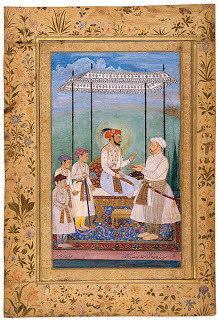
Mumtaz became his trusted companion, and travelled with him everywhere, even
on military campaigns, despite her frequent pregnancies. Court historians go to elaborate lengths to document the
intense and erotic relationship the couple enjoyed. His trust in her was so profound
that he even gave her his imperial seal, the Murh Uzah.
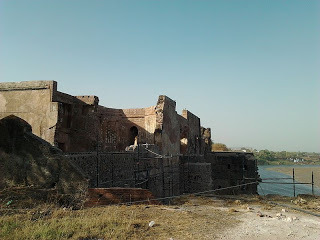
Burhanpur: photograph Md iet
In their nineteen years of marriage she bore him thirteen children, seven of
whom died at birth or at a very young age. But in 1631, while him accompanying on a
military expedition in Burhanpur (now in Madhya Pradesh) she died while giving
birth to their fourteenth child, a daughter named Gauhara.
The Shah was reportedly inconsolable. He went into secluded mourning for a
year and when he appeared again, his hair had turned white.
The first half of his life had been dedicated to their marriage; the second
half of it he dedicated to her memorial.
In 1631 he had
her body disinterred and transported in a golden casket back to Agra. He then set to work planning
the design and construction of a suitable mausoleum and funerary garden for the woman who was the love of his life. It was
a task that would take more than 22 years to complete: he was
still laboring over her tomb in his fifties.
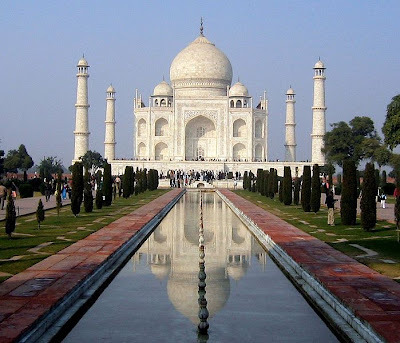
the Taj Mahal
He had translucent white
marble brought from Rajasthan; jade and crystal from China; turquoise from Tibet;
carnelian from Arabia. He brought in the finest artisans in the Empire.
There were sculptors from Bukhara, calligraphers from Syria and Persia,
stonecutters from Baluchistan.
When it was finished it became one of the wonders of the world and remains the
iconic
emblem of India; the Taj Mahal.
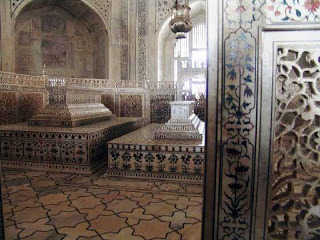
But the construction bankrupted the Empire and soon after its completion, he
was deposed by his son Aurangzeb and put under house arrest at nearby Agra
Fort.
It is said that he could not see the Taj from his cell so he hung a
crystal in the high window so he could see its reflection there. When he died, Aurangzeb
buried him in the mausoleum next to his wife.
Theirs
was one of the great love stories of history. And as the four million tourists
who flock to Agra every year will attest, it was indeed a love that did not grow old.

See Colin Falconer's HAREM here.
See more history at
Looking for Mr Goodstory here.
I LOVE COMMENTS

From History and Women









Published on July 26, 2012 18:18
No comments have been added yet.



